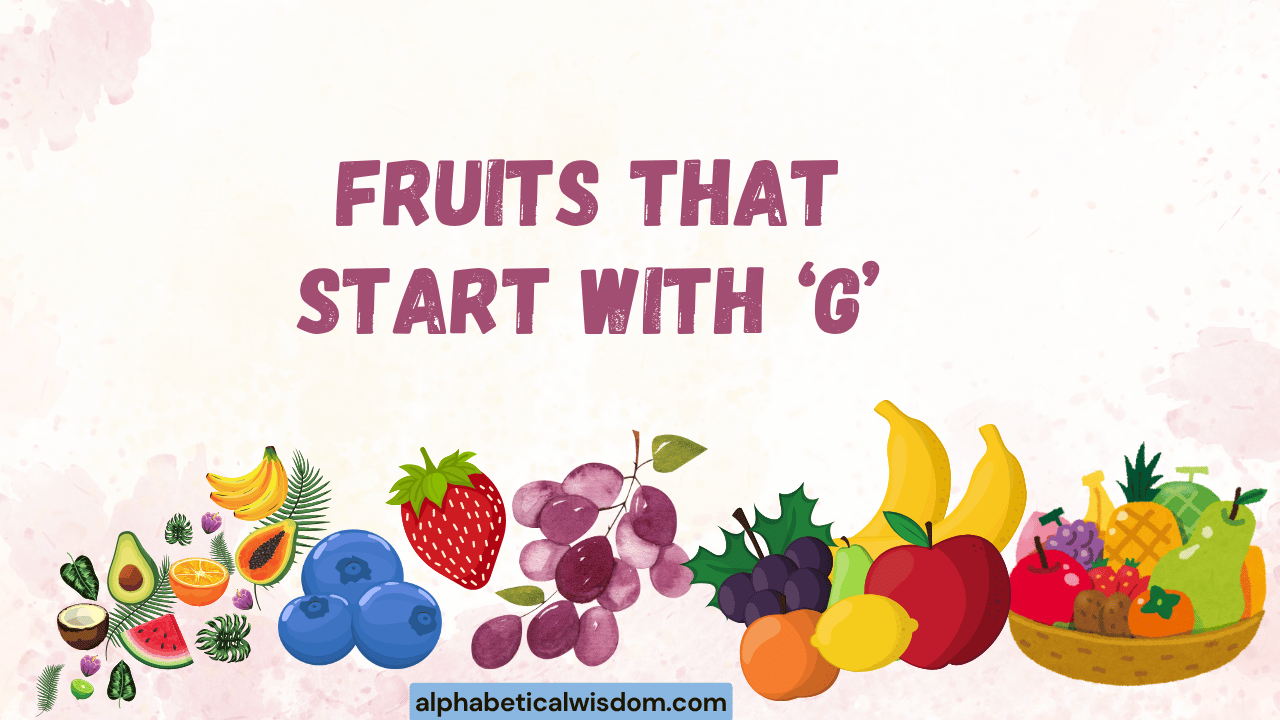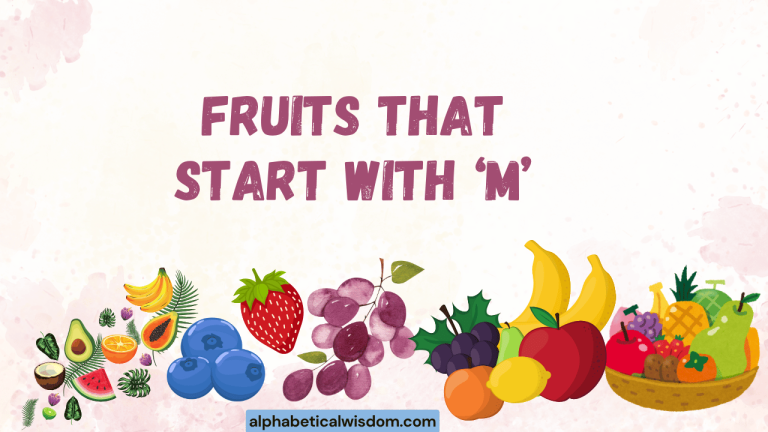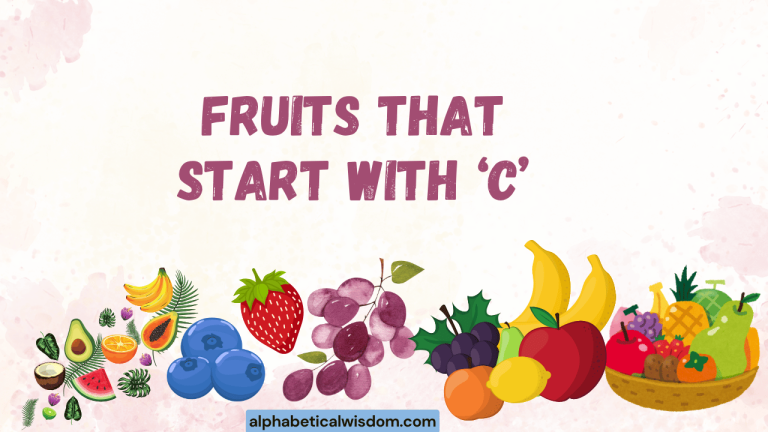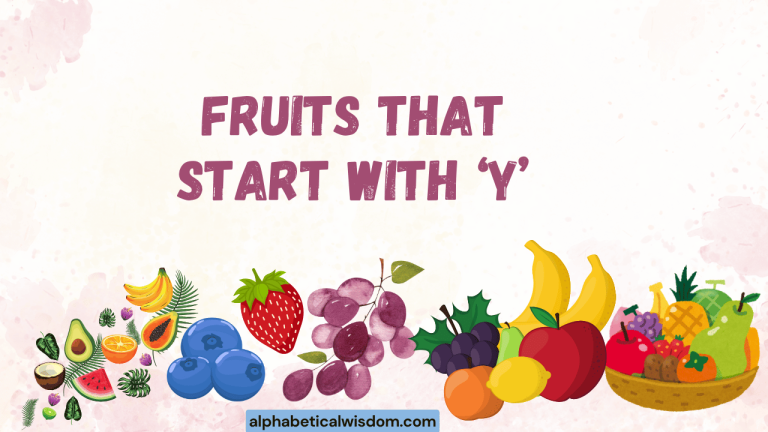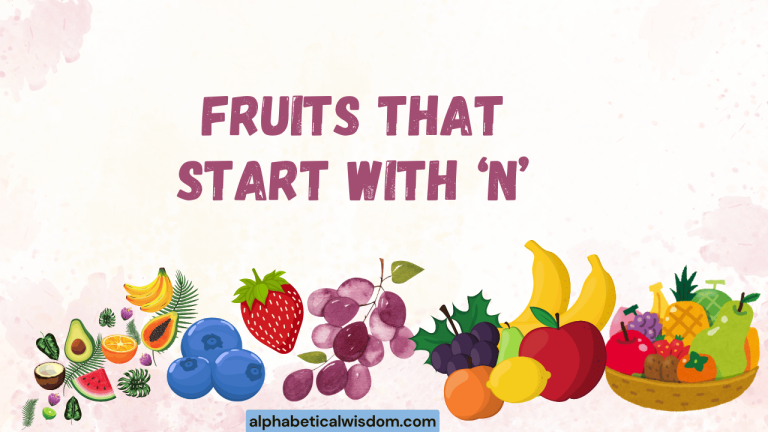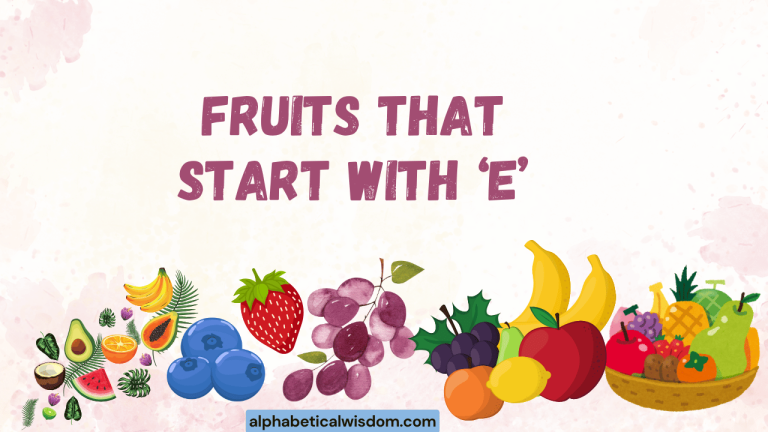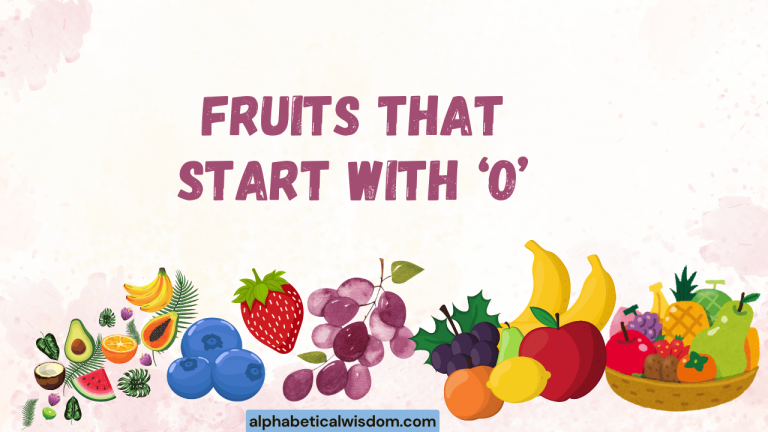Fruits That Start With G: A Grammatical Exploration
Exploring the world of fruits that start with the letter ‘G’ offers a unique opportunity to delve into various aspects of English grammar. This seemingly simple topic allows us to examine singular and plural nouns, countable and uncountable nouns, articles, and even descriptive adjectives.
Understanding these grammatical concepts in the context of fruit names can make learning more engaging and memorable. This article is designed for English language learners of all levels, from beginners to advanced students, and anyone interested in expanding their vocabulary and grammar skills in a fun and practical way.
Whether you’re a student preparing for an exam, a teacher looking for creative lesson ideas, or simply someone who loves language and food, this comprehensive guide will provide you with a solid understanding of how to use fruit names that start with ‘G’ correctly in English. We will explore definitions, structural elements, usage rules, common mistakes, and practice exercises to ensure you master this topic.
So, grab a snack (perhaps a grape or a guava!) and let’s embark on this fruity grammatical adventure!
Table of Contents
- Introduction
- Definition of Fruits Starting With G
- Structural Breakdown: Singular and Plural Forms
- Types and Categories of Fruits Starting With G
- Examples of Fruits Starting With G in Sentences
- Usage Rules: Articles and Countability
- Common Mistakes and How to Avoid Them
- Practice Exercises
- Advanced Topics: Idiomatic Expressions
- Frequently Asked Questions
- Conclusion
Definition of Fruits Starting With G
A fruit, in botanical terms, is a seed-bearing structure that develops from the ovary of a flowering plant. In culinary terms, fruits are often sweet and fleshy, and are typically eaten as part of a meal or as a snack.
For our purposes, we will focus on fruits that are commonly recognized and consumed, and whose names begin with the letter ‘G’. These fruits vary in origin, taste, and nutritional value, and they each present unique grammatical challenges and opportunities.
Understanding the definition is crucial because it helps us differentiate between fruits and vegetables. While some foods, like tomatoes, are botanically fruits, they are often used as vegetables in cooking.
When discussing grammar, it’s important to be clear about which category we are referring to. Therefore, for this article, we’ll focus on items commonly accepted as fruits, focusing on those beginning with the letter ‘G’.
Classification and Function
Fruits can be classified in various ways, including by their botanical family, their structure (e.g., berries, drupes, pomes), or their taste. In the context of grammar, the most relevant classification is whether a fruit name is a countable noun or an uncountable noun. Countable nouns can be singular or plural, while uncountable nouns are always singular in form. The grammatical function of a fruit name in a sentence depends on whether it is the subject, object, or complement, and how it interacts with verbs and other parts of speech.
For example, ‘grape’ is a countable noun (one grape, many grapes), while ‘guava jam’ is an uncountable noun. The function of ‘grape’ as a subject might be seen in the sentence “The grape is sweet.” Its function as an object can be seen in “I ate the grape.” The nuances of countability and grammatical function will be further explored in subsequent sections.
Contexts
The context in which a fruit name is used can also affect its grammatical properties. For instance, when referring to a specific type or variety of a fruit, we might use different articles or adjectives than when referring to fruit in general.
Consider the difference between “I want to buy a guava” (referring to any guava) and “I want to buy the Hawaiian guava” (referring to a specific type). The context provides additional information that influences the grammatical structure of the sentence.
Another important contextual factor is whether the fruit is being discussed in a scientific or culinary setting. In scientific contexts, more precise terminology and classifications may be used, while in culinary contexts, the focus is more on taste, preparation, and consumption.
These different contexts can affect the choice of words and the overall tone of the language used.
Structural Breakdown: Singular and Plural Forms
Understanding the structure of fruit names, particularly their singular and plural forms, is essential for correct grammar. Most fruit names that start with ‘G’ are countable nouns, meaning they can be singular or plural.
However, some fruit-related terms, such as jams or juices, are uncountable nouns and do not have plural forms. This section will break down the rules for forming singular and plural nouns and provide examples of how these rules apply to fruits that start with ‘G’.
The general rule for forming the plural of most nouns is to add ‘-s’ to the end of the word. However, there are exceptions to this rule, such as nouns ending in ‘-s’, ‘-x’, ‘-ch’, or ‘-sh’, which typically require ‘-es’ to form the plural.
Additionally, some nouns have irregular plural forms that do not follow any specific rule. We will examine how these rules and exceptions apply to the fruits in our focus group.
Regular Plural Nouns
Most fruit names that start with ‘G’ form their plural by simply adding ‘-s’ to the end of the singular form. This is the most common and straightforward way to create a plural noun in English.
Some examples include:
- Grape (singular) -> Grapes (plural)
- Galia melon (singular) -> Galia melons (plural)
These fruits follow the standard rule and are relatively easy to use in both singular and plural contexts. Understanding this basic rule is the foundation for mastering more complex plural forms.
Irregular Plural Nouns
While most fruit names that start with ‘G’ are regular, it’s important to be aware that some nouns in English have irregular plural forms. However, none of the common fruit names starting with ‘G’ fall into this category.
This simplifies the learning process, as you don’t need to memorize any exceptions for these particular fruits.
Even though fruits beginning with ‘G’ don’t generally present irregular plural forms, it’s crucial to understand irregular plurals in English in general. Some examples of irregular plurals include ‘child’ becoming ‘children’ and ‘mouse’ becoming ‘mice’.
While not directly applicable to our fruit list, understanding these exceptions is vital for overall grammatical proficiency.
Uncountable Nouns Related to Fruits Starting with G
Although we primarily focus on countable nouns, some fruit-related terms are uncountable. These nouns refer to substances or concepts that cannot be easily counted as individual units.
Examples include:
- Grape juice
- Guava jam
- Gooseberry puree
These terms do not have plural forms. Instead of saying “grape juices,” you would say “types of grape juice” or “glasses of grape juice.” Understanding the difference between countable and uncountable nouns is crucial for using articles and quantifiers correctly.
Types and Categories of Fruits Starting With G
Fruits that start with ‘G’ come in various types and categories, each with its unique characteristics and grammatical considerations. This section will explore some of the most common fruits in this category and discuss their specific grammatical properties.
We will also look at how different varieties of the same fruit can affect the way we use them in sentences.
Understanding the different types of fruits is not only helpful for expanding your vocabulary but also for improving your ability to use descriptive adjectives and other modifiers correctly. For example, you might describe a grape as “sweet” or “sour,” or a guava as “ripe” or “unripe.” These adjectives add detail and precision to your language.
Grapes
Grapes are one of the most well-known fruits starting with ‘G’. They are small, round or oval berries that grow in clusters on vines.
Grapes are used to make wine, juice, raisins, and are also eaten fresh. Grammatically, ‘grape’ is a countable noun, and its plural form is ‘grapes’.
When referring to a single grape, you would use the indefinite article “a” or “an” (e.g., “I ate a grape”). When referring to grapes in general, you can use the plural form without an article (e.g., “Grapes are delicious”).
When referring to specific grapes, you would use the definite article “the” (e.g., “The grapes I bought were very sweet”).
Guava
Guava is a tropical fruit with a sweet and slightly acidic flavor. It is native to Central America and is now grown in many tropical and subtropical regions.
Grammatically, ‘guava’ is a countable noun, and its plural form is ‘guavas’.
Like grapes, guavas follow the standard rules for articles. You would say “I ate a guava” to refer to a single fruit, “Guavas are rich in vitamin C” to refer to guavas in general, and “The guavas from my garden are the best” to refer to specific guavas.
Gooseberry
Gooseberry is a tart berry that grows on thorny bushes. It is often used in jams, pies, and other desserts.
Grammatically, ‘gooseberry’ is a countable noun, and its plural form is ‘gooseberries’.
The same rules for articles apply to gooseberries. You would say “I picked a gooseberry” to refer to a single berry, “Gooseberries are often used in pies” to refer to gooseberries in general, and “The gooseberries I bought were very tart” to refer to specific gooseberries.
Other Fruits Starting with G
Besides grapes, guavas, and gooseberries, there are other less common fruits that start with ‘G’. These include:
- Galia melon
- Gac fruit
- Grumichama
These fruits follow the same grammatical rules as the more common fruits. They are all countable nouns and form their plural by adding ‘-s’ (or ‘-es’ in the case of “gac fruits,” though “gacs” is also acceptable).
The key is to remember that the basic rules of grammar apply regardless of how common or uncommon the fruit is.
Examples of Fruits Starting With G in Sentences
This section provides extensive examples of how to use fruits that start with ‘G’ in sentences, organized by grammatical category. These examples will help you understand how to use these fruit names correctly in different contexts.
We will cover singular and plural nouns, articles, adjectives, and verb agreement.
By examining these examples, you will gain a better understanding of how to construct grammatically correct and meaningful sentences using fruit names. Pay attention to the context and how it affects the choice of words and grammatical structures.
Singular Nouns Examples
The following table provides examples of using singular fruit names in sentences. Notice the use of articles (a, an, the) and how they affect the meaning of the sentence.
| Sentence | Explanation |
|---|---|
| I ate a grape. | Using the indefinite article “a” indicates that I ate one grape, not any specific grape. |
| She bought a guava at the market. | “A” is used because it’s one unspecified guava. |
| He found a gooseberry bush in the garden. | “A” is used because it’s one unspecified gooseberry bush. |
| The grape was sweet and juicy. | Using the definite article “the” indicates that I am referring to a specific grape. |
| The guava I ate yesterday was delicious. | “The” is used because it refers to a specific guava eaten yesterday. |
| The gooseberry pie was a hit at the party. | “The” is used because it refers to a specific gooseberry pie. |
| A Galia melon is a type of cantaloupe. | Using the indefinite article “a” to introduce a type of melon. |
| I tried a Gac fruit for the first time. | Using the indefinite article “a” to indicate the first experience with the fruit. |
| The grumichama tree is native to Brazil. | “The” is used because it refers to a specific grumichama tree, perhaps one already mentioned or known. |
| I saw a grape vine growing in the vineyard. | Using the indefinite article to describe what was seen. |
| She peeled a guava carefully before eating it. | “A” is used to describe the action performed on a single, non-specific guava. |
| He tasted a gooseberry and made a sour face. | “A” is used to describe the experience of tasting one gooseberry. |
| A grape is a fruit that grows on vines. | General statement about grapes, using “a” to represent any grape. |
| The guava is known for its high vitamin C content. | Using “the” to refer to guavas in general, emphasizing a known feature. |
| A gooseberry is often used in making jams and pies. | General statement about gooseberries, using “a” to represent any gooseberry. |
| I picked a ripe grape from the bunch. | Indicating a specific action of picking one ripe grape. |
| She chose a guava that was perfectly ripe. | Describing the selection of a single, ripe guava. |
| He found a gooseberry that was hidden under a leaf. | Describing the discovery of one specific gooseberry. |
| I want to buy a Galia melon tomorrow. | Expressing the intention to buy an unspecified Galia melon. |
| She wants to try a Gac fruit when she visits Vietnam. | Expressing the desire to try a Gac fruit on a trip. |
| He planted a grumichama tree in his backyard. | Describing the action of planting a single grumichama tree. |
| The grape I ate was green. | Describing a specific grape that was eaten. |
| The guava was fragrant. | Describing a specific guava. |
| The gooseberry was very tart. | Describing a specific gooseberry. |
Plural Nouns Examples
The following table provides examples of using plural fruit names in sentences. Note how the verb agreement changes when using plural nouns.
| Sentence | Explanation |
|---|---|
| Grapes are my favorite fruit. | Using the plural form “grapes” to refer to grapes in general. The verb “are” agrees with the plural noun. |
| Guavas are rich in vitamin C. | “Guavas” is plural, so the verb “are” is used. |
| Gooseberries are often used in pies. | “Gooseberries” is plural, so the verb “are” is used. |
| The grapes I bought were very sweet. | Using “grapes” to describe a specific set of grapes, with the verb “were” agreeing. |
| The guavas from my garden are the best. | “Guavas” is plural, so the verb “are” is used, specifying guavas from a garden. |
| The gooseberries I picked are perfect for jam. | “Gooseberries” is plural, so the verb “are” is used, specifying gooseberries picked for jam. |
| Galia melons are a hybrid fruit. | Using “Galia melons” in plural to describe a type of fruit. |
| Gac fruits are native to Southeast Asia. | “Gac fruits” is plural, describing the origin of the fruit. |
| Grumichamas are rare fruits. | “Grumichamas” is plural, describing the rarity of the fruit. |
| I like to eat grapes in the summer. | General statement about eating grapes in the summer, using “grapes” in plural. |
| She prefers guavas over apples. | Expressing a preference for guavas, using “guavas” in plural. |
| He grows gooseberries in his garden. | Describing the action of growing gooseberries, using “gooseberries” in plural. |
| The grapes on the vine are ripe. | Specific grapes on the vine are described as ripe. |
| The guavas in the basket are all organic. | Specific guavas in the basket are described as organic. |
| The gooseberries in the jar are preserved in sugar. | Specific gooseberries in the jar are described as preserved. |
| I bought grapes, guavas, and gooseberries at the store. | Listing various fruits that were bought. |
| She mixed grapes and guavas in a fruit salad. | Combining grapes and guavas in a fruit salad. |
| He made jam using gooseberries and other berries. | Describing the ingredients used to make jam. |
| Galia melons are often used in salads. | Describing the use of Galia melons in salads. |
| Gac fruits are known for their health benefits. | Describing the health benefits of Gac fruits. |
| Grumichamas are difficult to find in supermarkets. | Describing the difficulty of finding grumichamas in supermarkets. |
| We picked grapes from the vineyard. | Describing the activity of picking grapes. |
| They harvested guavas from the trees. | Describing the action of harvesting guavas. |
| Farmers grow gooseberries commercially. | Describing the commercial cultivation of gooseberries. |
Uncountable Nouns Examples
The following table provides examples of using uncountable fruit-related terms in sentences. Note that these terms do not have plural forms and are always treated as singular.
| Sentence | Explanation |
|---|---|
| Grape juice is refreshing. | “Grape juice” is an uncountable noun, so it takes a singular verb (“is”). |
| Guava jam is delicious on toast. | “Guava jam” is uncountable, so the verb “is” agrees. |
| Gooseberry puree is used in this recipe. | “Gooseberry puree” is uncountable, so the verb “is” agrees. |
| I prefer grape juice to soda. | Using “grape juice” as an uncountable noun in a comparison. |
| She makes guava jam every summer. | “Guava jam” is uncountable, describing a recurring action. |
| He added gooseberry puree to the sauce. | “Gooseberry puree” is uncountable, describing an ingredient added to a sauce. |
| How much grape juice do you want? | Using “grape juice” with “how much” to ask about quantity. |
| Is there any guava jam left? | Using “guava jam” to inquire about the remaining amount. |
| A little gooseberry puree goes a long way. | Describing the effect of a small amount of gooseberry puree. |
| The grape juice was freshly squeezed. | Describing the freshness of the grape juice. |
| The guava jam has a tropical flavor. | Describing the flavor of the guava jam. |
| The gooseberry puree is too tart for me. | Describing the tartness of the gooseberry puree. |
| I bought a bottle of grape juice. | Using “grape juice” with a countable unit (bottle). |
| She made a jar of guava jam. | Using “guava jam” with a countable unit (jar). |
| He prepared a bowl of gooseberry puree. | Using “gooseberry puree” with a countable unit (bowl). |
| Grape juice is often used as a base for cocktails. | Describing the common use of grape juice. |
| Guava jam is a popular spread in many countries. | Describing the popularity of guava jam. |
| Gooseberry puree adds a unique flavor to desserts. | Describing the flavor enhancement provided by gooseberry puree. |
| The quality of grape juice depends on the grapes used. | Describing the dependency of grape juice quality on the grapes. |
| The texture of guava jam varies with the recipe. | Describing the texture variation of guava jam. |
| The color of gooseberry puree can range from green to red. | Describing the color variation of gooseberry puree. |
| I spilled some grape juice on the table. | Describing the accidental spilling of grape juice. |
| She tasted the guava jam and smiled. | Describing the tasting of guava jam. |
| He stirred the gooseberry puree into the mixture. | Describing the action of stirring gooseberry puree. |
Usage Rules: Articles and Countability
Using articles (a, an, the) correctly with fruit names depends on whether the noun is countable or uncountable, and whether you are referring to a specific or general instance. This section will provide a comprehensive overview of the rules for using articles with fruits that start with ‘G’.
We will also discuss the concept of countability and how it affects article usage.
Mastering these rules is essential for clear and accurate communication. Incorrect article usage can lead to confusion and misunderstandings.
By understanding the nuances of article usage, you can improve your overall grammatical proficiency and express yourself more effectively.
Countable Nouns and Articles
For countable nouns, the choice of article depends on whether you are referring to a specific or general instance.
- Indefinite Article (a/an): Use “a” or “an” when referring to a non-specific or generic instance of the noun. Use “a” before words that start with a consonant sound and “an” before words that start with a vowel sound.
- Definite Article (the): Use “the” when referring to a specific instance of the noun that has already been mentioned or is otherwise known to the listener or reader.
- No Article: Use no article when referring to countable nouns in general in the plural form.
Examples:
- I ate a grape. (Non-specific grape)
- The grape I ate was sweet. (Specific grape)
- Grapes are delicious. (Grapes in general)
Uncountable Nouns and Articles
For uncountable nouns, the rules for article usage are slightly different. Uncountable nouns are typically used without an article when referring to the substance in general.
However, “the” can be used to refer to a specific instance or quantity of the substance.
- No Article: Use no article when referring to the uncountable noun in general.
- Definite Article (the): Use “the” when referring to a specific instance or quantity of the uncountable noun.
Examples:
- Grape juice is refreshing. (Grape juice in general)
- The grape juice I bought was very sweet. (Specific grape juice)
Exceptions and Special Cases
There are some exceptions and special cases to the rules for article usage. For example, when using a countable noun in a generic sense, you can use the definite article “the” to refer to the entire class of objects.
Example:
- The grape is a fruit that grows on vines. (Referring to grapes as a class of fruit)
Another special case is when using a noun with a possessive adjective. In this case, no article is needed.
Example:
- My guava is ripe. (No article needed)
Common Mistakes and How to Avoid Them
Even experienced English learners can make mistakes when using fruits that start with ‘G’ in sentences. This section will address some of the most common mistakes and provide tips on how to avoid them.
We will focus on errors related to article usage, countability, and verb agreement.
By identifying these common mistakes and understanding the correct usage, you can improve your accuracy and confidence in using fruit names in your writing and speaking.
Incorrect Article Usage
One of the most common mistakes is using the wrong article or omitting the article altogether. Here are some examples of incorrect article usage and how to correct them:
| Incorrect | Correct | Explanation |
|---|---|---|
| I ate the grape. (when referring to a non-specific grape) | I ate a grape. | Use “a” for non-specific singular countable nouns. |
| Grape is my favorite fruit. | Grapes are my favorite fruit. | Use the plural form to refer to grapes in general. |
| I like a grape juice. | I like grape juice. | Omit the article for uncountable nouns in general. |
| The grape juice is good. (when referring to grape juice in general) | Grape juice is good. | Omit the article for uncountable nouns in general statements. |
| A guavas are delicious. | Guavas are delicious. | Omit the indefinite article with plural nouns. |
| I want to buy the guava. (when any guava is acceptable) | I want to buy a guava. | Use “a” when referring to a non-specific item from a variety. |
Incorrect Countability
Another common mistake is treating uncountable nouns as countable or vice versa. Here are some examples:
| Incorrect | Correct | Explanation |
|---|---|---|
| I bought two grape juices. | I bought two bottles of grape juice. | “Grape juice” is uncountable, so use a countable unit (bottle). |
| How many guava jam do you have? | How much guava jam do you have? | Use “how much” with uncountable nouns. |
| Give me a gooseberry puree. | Give me some gooseberry puree. | “Gooseberry puree” is uncountable, so use “some”. |
Incorrect Verb Agreement
Incorrect verb agreement occurs when the verb does not match the number (singular or plural) of the subject. Here are some examples:
| Incorrect | Correct | Explanation |
|---|---|---|
| Grapes is my favorite fruit. | Grapes are my favorite fruit. | Use “are” with the plural noun “grapes”. |
| Guava jam are delicious. | Guava jam is delicious. | Use “is” with the uncountable noun “guava jam”. |
| Gooseberries is often used in pies. | Gooseberries are often used in pies. | Use “are” with the plural noun “gooseberries”. |
Practice Exercises
Test your knowledge with these practice exercises. Fill in the blanks with the correct article (a, an, the) or no article (Ø).
Identify whether the noun should be singular or plural. Answers are provided at the end of the section.
Exercise 1: Article Usage
Fill in the blanks with the correct article (a, an, the) or no article (Ø).
- I want to buy ____ guava at the market.
- ____ grapes are my favorite fruit.
- She made jam using ____ gooseberries from her garden.
- ____ grape juice is refreshing on a hot day.
- ____ guava I ate yesterday was very sweet.
- He picked ____ gooseberry from the bush.
- ____ Galia melon is a type of cantaloupe.
- She wants to try ____ Gac fruit when she visits Vietnam.
- ____ grumichama tree is native to Brazil.
- I spilled ____ grape juice on the table.
Exercise 2: Singular or Plural
Choose the correct form of the noun (singular or plural).
- (Grape/Grapes) ____ are often used to make wine.
- I ate a (guava/guavas) ____ for breakfast.
- (Gooseberry/Gooseberries) ____ are tart berries.
- The (grape/grapes) ____ I bought were very sweet.
- (Guava/Guavas) ____ is rich in vitamin C.
- He picked a (gooseberry/gooseberries) ____ from the bush.
- (Galia melon/Galia melons) ____ are hybrid fruits.
- (Gac fruit/Gac fruits) ____ are native to Southeast Asia.
- (Grumichama/Grumichamas) ____ are rare fruits.
- She likes to eat (grape/grapes) ____ in the summer.
Exercise 3: Error Correction
Identify and correct the errors in the following sentences.
- I like a grape.
- Guavas is my favorite fruit.
- I want to buy the guava.
- Grape juice are refreshing.
- She bought two guava jam.
- Gooseberry is tart.
- I ate the grapes. (when only one grape was eaten)
- He prefers a guavas.
- Galia melons is a hybrid fruit.
- Gac fruits is native to Southeast Asia.
Answers to Exercises
Exercise 1: Article Usage
- a
- Ø
- Ø
- Ø
- The
- a
- A
- a
- The
- some
Exercise 2: Singular or Plural
- Grapes
- guava
- Gooseberries
- grapes
- Guava
- gooseberry
- Galia melons
- Gac fruits
- Grumichamas
- grapes
Exercise 3: Error Correction
- Incorrect: I like a grape. Correct: I like grapes.
- Incorrect: Guavas is my favorite fruit. Correct: Guavas are my favorite fruit.
- Incorrect: I want to buy the guava. Correct: I want to buy a guava.
- Incorrect: Grape juice are refreshing. Correct: Grape juice is refreshing.
- Incorrect: She bought two guava jam. Correct: She bought two jars of guava jam.
- Incorrect: Gooseberry is tart. Correct: Gooseberries are tart.
- Incorrect: I ate the grapes. Correct: I ate a grape.
- Incorrect: He prefers a guavas. Correct: He prefers guavas.
- Incorrect:
He prefers a guavas.
Gac fruits is native to Southeast Asia.
\
He prefers guavas.
Galia melons are a hybrid fruit.
Gac fruits are native to Southeast Asia.
I want to buy a guava at the market.
Grapes are my favorite fruit.
She made jam using gooseberries from her garden.
Grape juice is refreshing on a hot day.
The guava I ate yesterday was very sweet.
He picked a gooseberry from the bush.
A Galia melon is a type of cantaloupe.
She wants to try a Gac fruit when she visits Vietnam.
The grumichama tree is native to Brazil.
I spilled some grape juice on the table.
Grapes are often used to make wine.
I ate a guava for breakfast.
Gooseberries are tart berries.
The grapes I bought were very sweet.
Guava is rich in vitamin C.
He picked a gooseberry from the bush.
Galia melons are hybrid fruits.
Gac fruits are native to Southeast Asia.
Grumichamas are rare fruits.
She likes to eat grapes in the summer.
I like a grape.
Guavas is my favorite fruit.
I want to buy the guava.
Grape juice are refreshing.
She bought two guava jam.
Gooseberry is tart.
I ate the grapes. (when only one grape was eaten)
He prefers a guavas.
Galia melons is a hybrid fruit.
Gac fruits is native to Southeast Asia.
\
I like grapes.
Guavas are my favorite fruit.
I want to buy a guava.
Grape juice is refreshing.
She bought two jars of guava jam.
Gooseberries are tart.
I ate a grape.
He prefers guavas.
Galia melons are a hybrid fruit.
Gac fruits are native to Southeast Asia.
\
Advanced Topics: Idiomatic Expressions
Beyond basic grammar, understanding idiomatic expressions that use fruit names can enrich your language skills and cultural awareness. Idioms are phrases or expressions whose meanings cannot be understood from the literal meanings of the individual words. This section will explore some common idiomatic expressions that use fruits starting with ‘G’.
Learning these idioms will not only help you understand native speakers better but also allow you to use more colorful and expressive language in your own writing and speaking. Keep in mind that idioms often have cultural connotations, so it’s important to use them appropriately and in the right context.
Common Idioms
Here are some idiomatic expressions that use fruits starting with ‘G’:
- Sour Grapes: This idiom refers to the attitude of someone who disparages something because they cannot have it themselves. It comes from Aesop’s fable “The Fox and the Grapes,” where a fox, unable to reach some grapes, declares them sour and not worth eating.
Example: “He said he didn’t want the promotion anyway, but it just sounds like sour grapes because he didn’t get it.”
Usage Considerations
When using idiomatic expressions, it’s important to consider the context and audience. Some idioms may be more appropriate for informal settings, while others may be suitable for more formal situations. Additionally, some idioms may not be universally understood, so it’s important to be mindful of your audience’s cultural background and familiarity with the expression.
For example, the idiom “sour grapes” is relatively well-known in English-speaking countries, but it may not be as familiar to speakers of other languages. In such cases, it may be necessary to explain the meaning of the idiom or use a more direct expression.
Frequently Asked Questions
Why is it important to learn about fruits that start with ‘G’ in English grammar?
Learning about fruits that start with ‘G’ is a fun and engaging way to reinforce basic grammar concepts such as countable and uncountable nouns, article usage, and verb agreement. It provides a specific and memorable context for understanding these rules.
Are all fruits that start with ‘G’ countable nouns?
No, not all fruit-related terms that start with ‘G’ are countable nouns. For example, “grape juice” and “guava jam” are uncountable nouns.
When should I use “a” versus “an” before a fruit name that starts with ‘G’?
Use “a” before words that start with a consonant sound (e.g., “a grape”) and “an” before words that start with a vowel sound. However, none of the fruit names starting with G require the use of ‘an’.
Can you give more examples of sentences using fruits that start with ‘G’?
Certainly! Here are a few more examples:
- I bought a bag of grapes at the store.
- She made a delicious
- She made a delicious guava smoothie this morning.
- Gooseberries are often used in traditional English desserts.
Conclusion
Exploring fruits that start with ‘G’ provides a practical and enjoyable way to reinforce essential English grammar concepts. From understanding the difference between countable and uncountable nouns to mastering article usage and verb agreement, the grammatical properties of these fruits offer valuable insights into the structure and usage of the English language.
By working through the examples, exercises, and explanations in this article, you have gained a solid foundation for using fruit names correctly and confidently in your writing and speaking. Whether you’re a student, a teacher, or simply a language enthusiast, we hope this guide has been both informative and engaging. So go ahead, use your newfound knowledge to add some fruity flair to your language skills!
